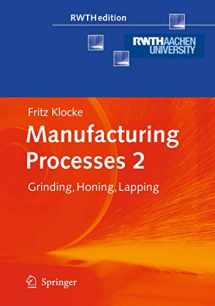
Manufacturing Processes 2 (RWTHedition)
Book details
Summary
Description
The future of manufacturing companies depends largely on their ability to adapt to swiftly changing global conditions. These are exemplified by international com- tition, rapidly growing intercommunication and the increased significance of en- ronmental issues [KLOC98a, ENGE02]. Precision machining with geometrically undefined cutting edges represents a key production engineering technology with high efficiency, security and machining quality. DIN norm 8589 subsumes within the group “machining with geometrically - defined cutting edges” the following material removal manufacturing processes: grinding, honing, lapping, free abrasive grinding and abrasive blast cutting. - chining is carried out in these production methods by means of more or less - regularly formed grains composed of hard substances brought into contact with the material. Of all methods understood as machining with geometrically undefined cutting edges, only grinding, honing and lapping can, strictly speaking, be considered p- cision machining. Free abrasive grinding and abrasive blast cutting, also treated in this book, represent a special group, as they generally cannot bring about geom- rical change in the material.


We would LOVE it if you could help us and other readers by reviewing the book
Book review



